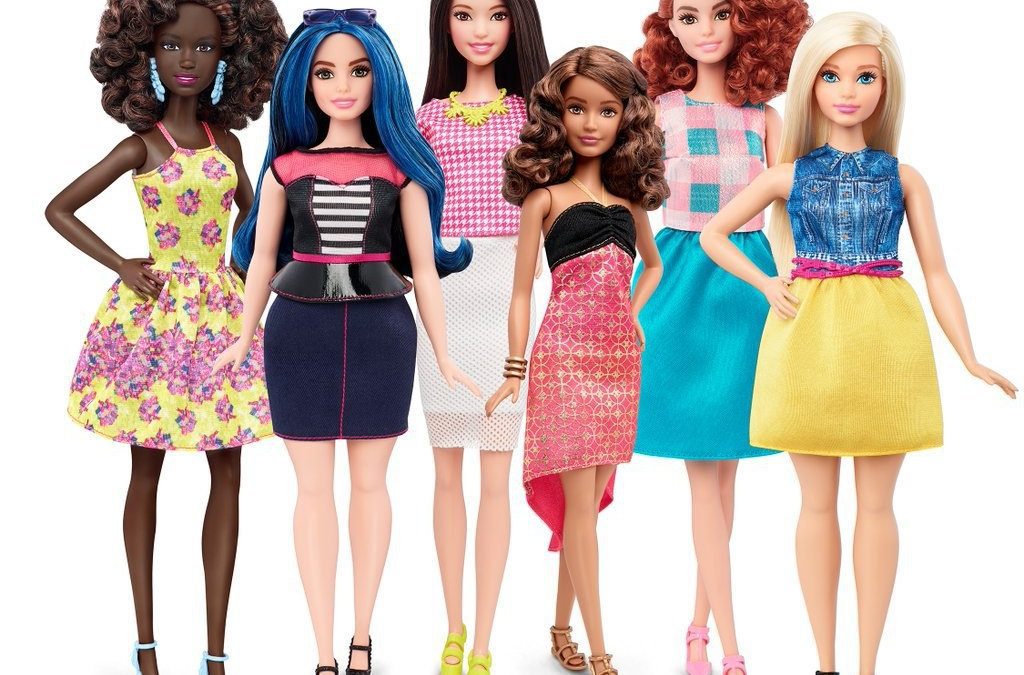I grew up playing with Barbie dolls and my body image still suffers. After all, how can any human being possibly have a body with those proportions? It’s unrealistic and certainly damaging for young impressionable girls. I was one of them.
Research supports the fact that Barbie’s unrealistic body proportions negatively impact girl’s self-esteem! No doubt in response to decreasing sales for the Barbie line, last week Mattel unveiled new models that represent different body types. Although each doll is still gorgeous, you can now choose your preferred body type: petite, curvy or tall.
Are we seeing a shift in toys for young girls? Can the toy industry help empower young girls to use their brains and bodies in a different way?
According to Debbie Sterling, founder and CEO of GoldieBlox, a company that offers award-winning construction toys for young girls, the game has changed. Sterling says that major retailers like Target and Amazon are removing gender labeling in their toy aisles. Major brands like Barbie and American Girl are now using girl empowerment as a key element in their marketing initiatives. Every day there are new toy start-ups launching on Kickstarter that teach STEM principles and make girl empowerment a key part of their strategy. A recent study confirms that construction toys help develop motor and spatial skills as well as an early interest in STEM.
Sterling, herself an engineer, says, “Ever since we launched the GoldieBlox Kickstarter campaign in 2013, a tidal wave has begun. In that video, we shined a light on the pink aisle and the gender stereotyping that happens in children’s toys and media from a young age, giving girls a very limited view on what’s possible for them. Since toys and media are so influential in shaping kids’ views of themselves, what they’re good at and what they want to be when they grow up, we knew it was time to change the narrative. GoldieBlox is all about getting girls excited about engineering, building and inventing. Our motto is that it’s ok to be a princess, but you can build your own castle too. We’re proud to be one of the first movers in this industry shift, and now that we have proven market demand for more empowering toys and media for girls, the industry has taken notice and is starting to change.”
Other great examples of empowering toys are Roominate, littlebits, Wonder Workshop, A Mighty Girl, Amy Poehler’s Smart Girls, JewelBots, Hello Ruby, DC Super Girls, and Go! Go! Sport Girls.
I recently spoke with creator and founder of Go! Go! Sport Girls, Jodi Norgaard. Like many moms, she was frustrated with the dolls that were available for young girls. Nine years ago, she was shopping with her daughter for a gift. “We came upon a line of dolls. It just really stopped me in my tracks. I looked at all the dolls and they all had short skirts, cropped tops, belly button rings, big hair and makeup. And one even had a faux fur jacket. I picked up the doll and my daughter and I were stunned. I took a look at the hang tag. The name of the tag was Lovely Lola. And at that moment I thought to myself, “There is not one parent out there that wants their daughter to look, act, or be called Lovely Lola.”
Norgaard, along with her daughter and friends, designed the line of plush dolls. To make sure that all the dolls were in the same proportion as real little girls, she measured her daughter and her friends. Each doll is 14 inches and represents 13 different sports including soccer, basketball, running, and tennis. Some dolls also have an accompanying book.
Norgaard feels very strongly that we need to send a different message to young girls. “We need to encourage our girls to use their bodies and brains in a healthy way. What they’re good at doing. And not say, ‘hey, you have to look a certain way. And you have to act a certain way.’ Girls play sports. Why shouldn’t their dolls play sports?”
After some initial push back from toy buyers, Go! Go! Sports Girls are now gaining popularity and are sold in Walmart as well as online. Norgaard says parents and grandparents have been her greatest supporters.
Where is the industry headed?

Recent Comments